We electrify
Waste collection vehicles, sweepers, and alike.
Available for new and existing vehicles.
Battery-electric or hydrogen.
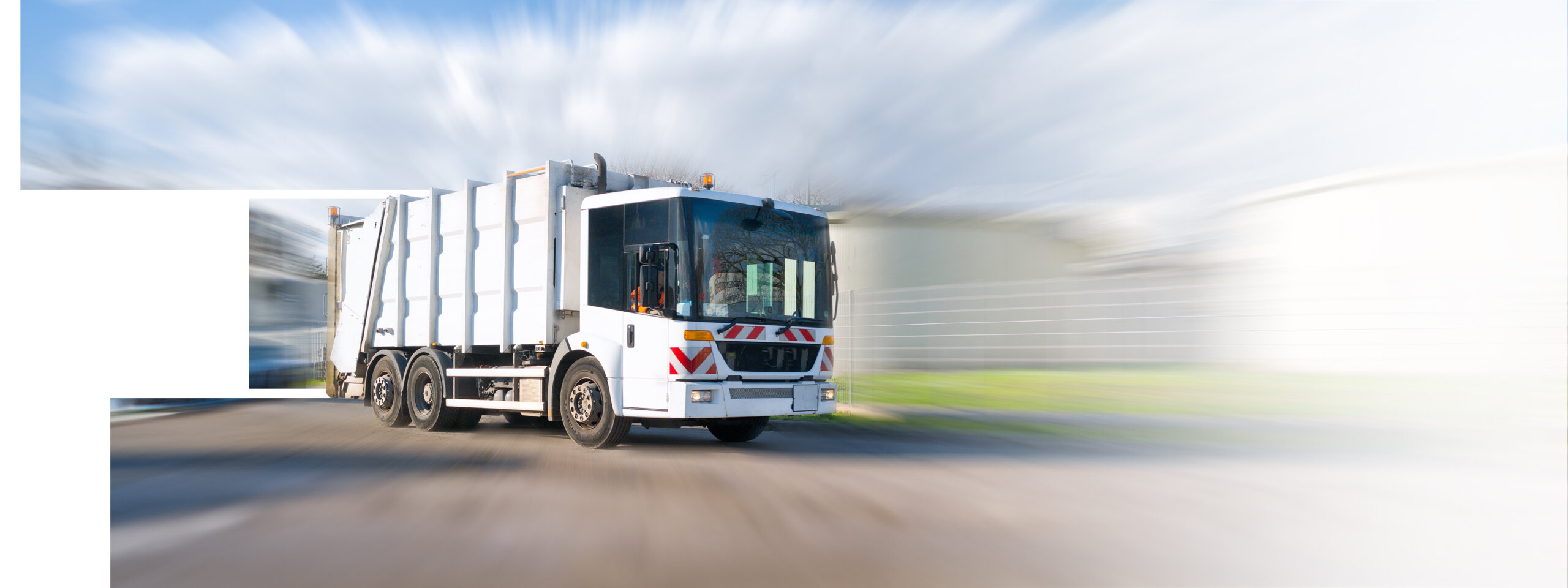
We electrify special vehicles
Waste collection vehicles, sweepers, and alike.
Available for new and existing vehicles.
Battery-electric or hydrogen.
The electrification of commercial vehicles with the pepper Kit does is not limited to city buses or ordinary trucks. We offer solutions for special vehicles of all kinds so that your fleet can also become electric.
These special vehicles include waste collection vehicles, sewer and street cleaning vehicles, construction site trucks, emergency vehicles, and other special vehicles with various bodies.
This way, you too can make an active contribution to the mobility transition, meet the requirements of the Clean Vehicles Directive (where applicable), and operate your vehicles economically, emission-free, and with a near-silent drive.
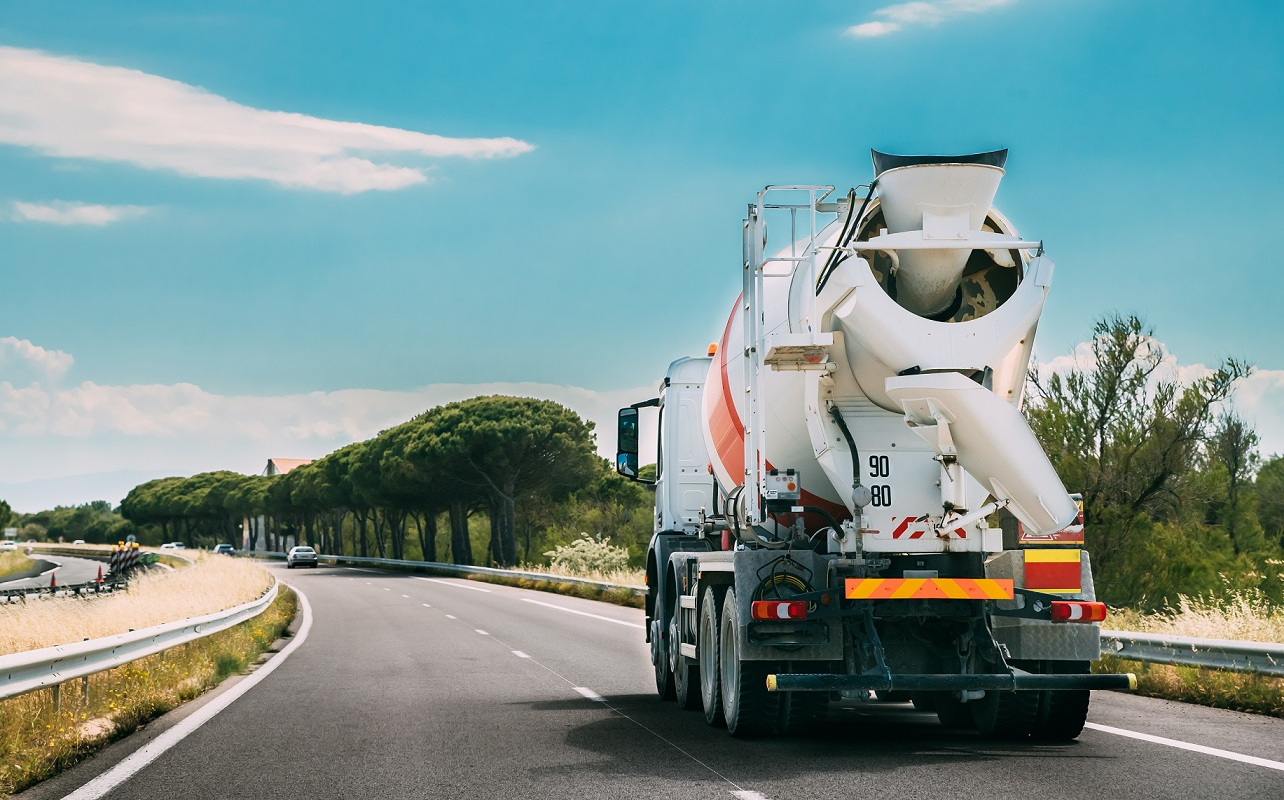
Construction site trucks
A typical construction site truck has several driven axles, a transfer case, high ground clearance, and a body with high energy requirements, for a concrete mixer, e.g.
The Mercedes Benz Arocs is very common as construction site truck. It is ideally suited for conversion to electric drive and its body can be operated efficiently using a high power ePTO.
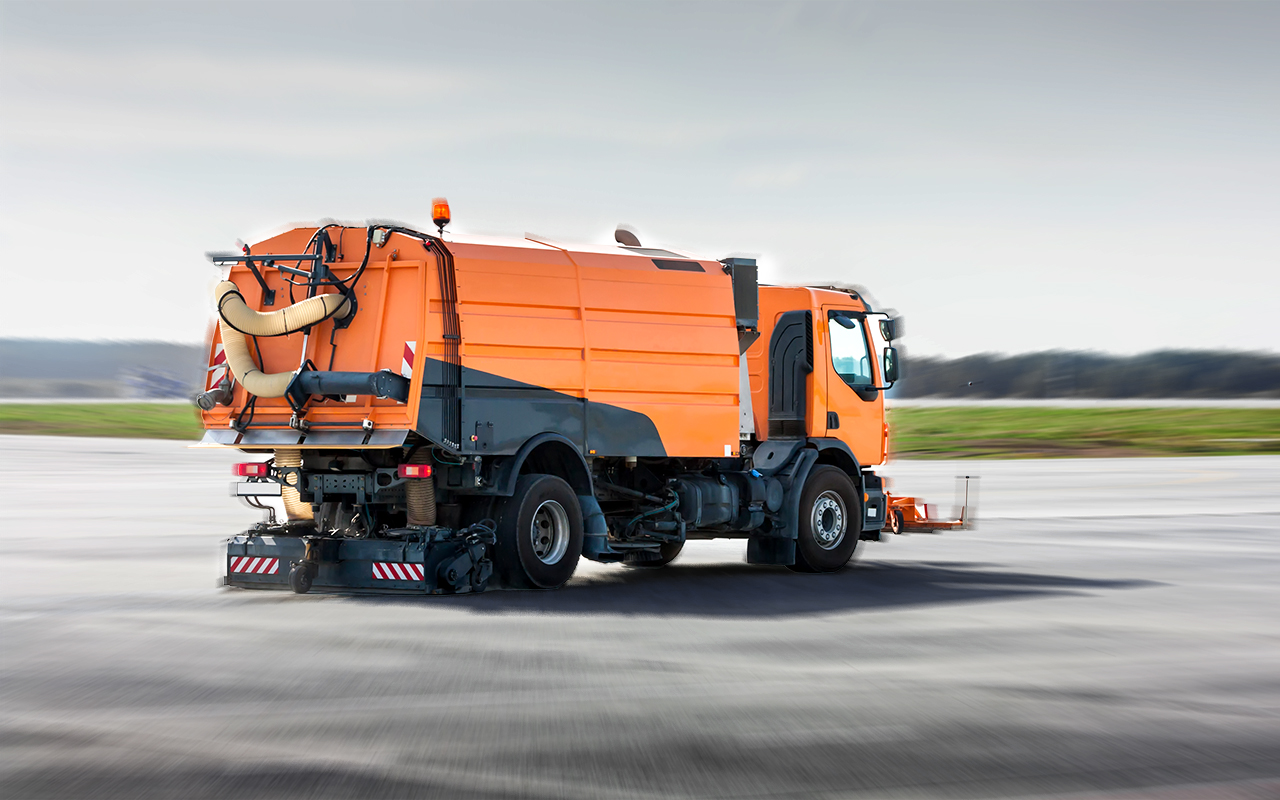
Waste collection, road and sewer cleaning vehicles
Similarly, waste collection vehicles, road and sewer cleaning vehicles are suitable for conversion to electric drive with pepper’s modular drive kit including packaging options such as individual battery pack sizes. Here, too, low-noise electric operation is ideal, because these vehicles are often on the road in city centers and municipalities and usually travel slowly, which is all the more efficient with e-drive.
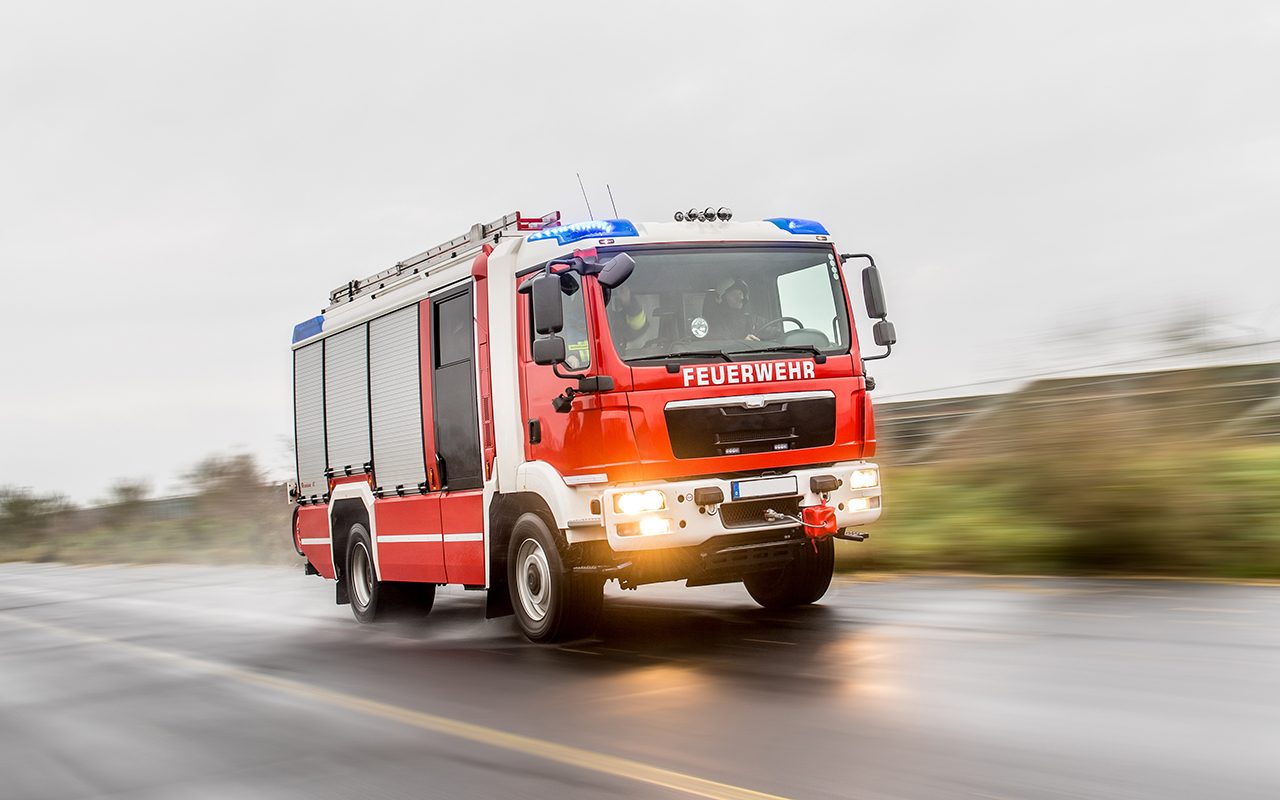
Emergency vehicles
Emergency fire-fighting vehicles, including those on airfields, are another example of the ideal use of electric drive systems. Here, too, the possibility of an individual packaging of the modular drive kit’s components is essential, since, for example, additional equipment compartments can be fitted between the axles.
Also, fire-fighting vehicles have to comply with special standards (e.g. max. weight specifications), and power generators required for operations can be integrated into the vehicle concept by using an HV interface.
The pepper Kit
Our award-winning electrification kit consists of state-of-the-art components from renowned manufacturers in combination with specially developed ECU software architecture for smooth communication between the components.
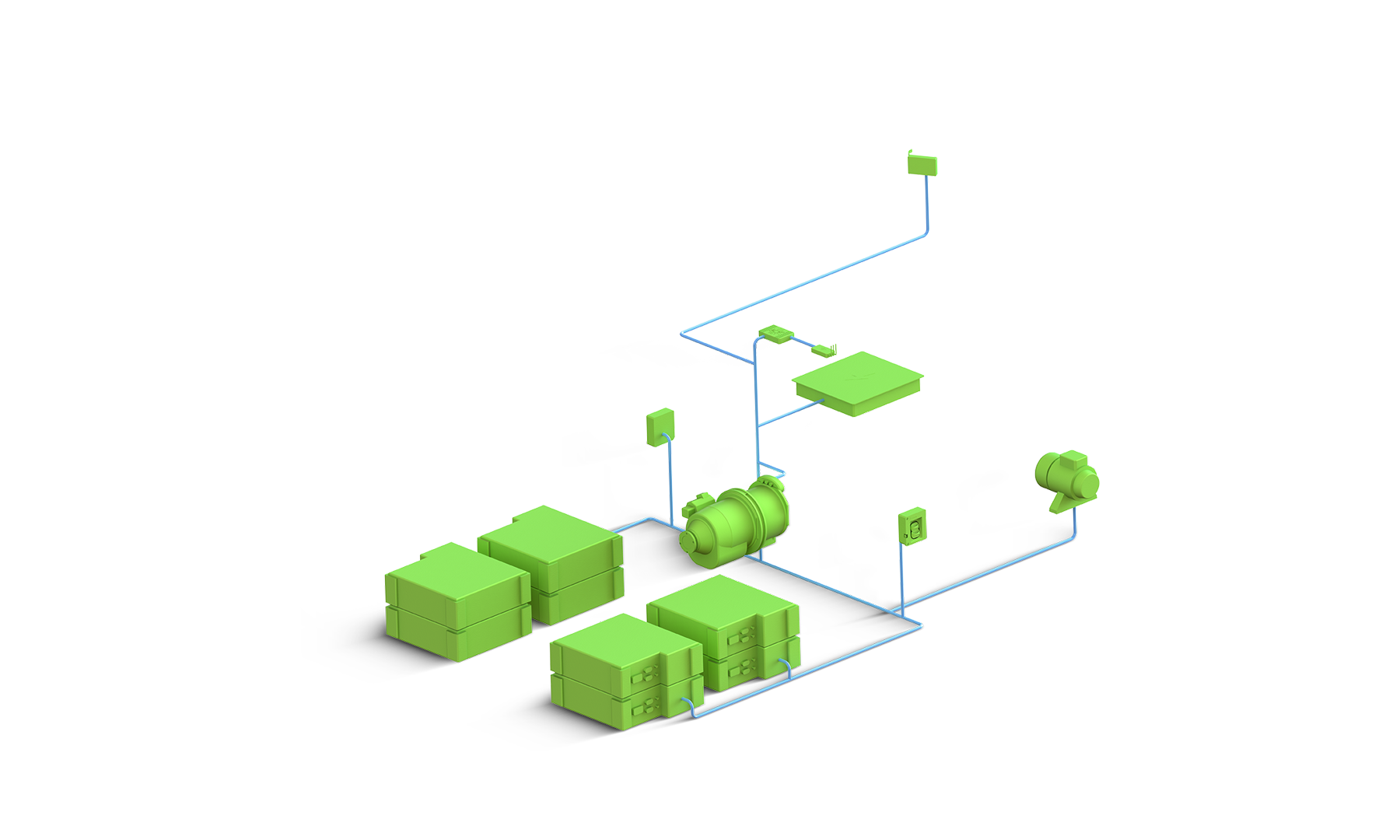
HMI Display
An additional display is installed for the driver, which provides information on the vehicle status, range, battery and charging status, and other important system messages.
VCU
The VCU (Vehicle Control Unit) is the core element of pepper’s modular drive system. It integrates and controls all system components on a logical as well as functional level. The software is developed in-house and complies with the automotive industry’s highest standard for functional safety (ISO 26262). The pepper VCU easily allows the modular drive system to fit in all sorts of vehicles from different manufacturers.
Telematics Unit
Thanks to system-wide integration of the telematics unit used, a wide range of different data can be tracked. The current functions include vehicle tracking, online diagnosis, and the capture of live data about the vehicle state. Furthermore, over-the-air software updates will be available. Thanks to predictive analytical software from pepper’s technology partner TWAICE, the use of a digital battery twin increases the service life, efficiency, and sustainability of the batteries in use. Further useful value-added services for the digitalization of fleet management are already in development.
BJB
The Battery Junction Box (BJB) is pepper’s own development and serves as a “high voltage fuse box”. It is connected to battery (and optional fuel cell) and is being controlled by the VCU. Furthermore, the BJB is constantly monitoring the battery insulation and is crucial in case of an emergency if the system needs to be quickly discharged.
Auxiliary units
Other components of the kit include auxiliary units such as air compressors, servo pumps, air conditioning systems and hybrid auxiliary heaters, which are installed for purely electric or hydrogen-electric operation of the vehicle. An efficient control system, which takes over the interaction of these components, guarantees the most energy-efficient operation possible.
Charge Controller
The charge controller we use, is provided by chargebyte and serves both vehicle and charging infrastructure. It assures highest compatibility and can be directly integrated into the pepper modular drive system. Furthermore, it provides the option of using several charging sockets on vehicle side, which is highly practical for operation in depots. Close collaboration with market leader chargebyte allows fast development cycles and a glance into the future as the controller is fulfilling the ISO 15118 standard for bi-directional charging already today.
- Charging type: Type 2 CCS, DC charging
- Max. charging: up to 350 kW
- System voltage: 650 V
Electric Drive Train
Depending on the vehicle, different types of electric motors can be used, our portfolio of electric drive trains is growing steadily. For example, in the Mercedes-Benz Citaro city bus the AxTrax 140 electric portal axle from ZF is used, and in the Mercedes-Benz Actros MP3 truck the CeTrax central engine from ZF.
Battery
The pepper modular drive system uses a lithium-ion battery based on NMC technology (Nickel-Manganese-Cobalt). It comes in units of 60 kWh each, two of which can be seen on display. Minimum configuration for pure electric drivetrain is 120 kWh, scalable up to 720 kWh, depending on the vehicle and operation purpose. To charge a 240 kWh battery from 8% to 80% takes approx. 70mins, using a 150 kW charger.
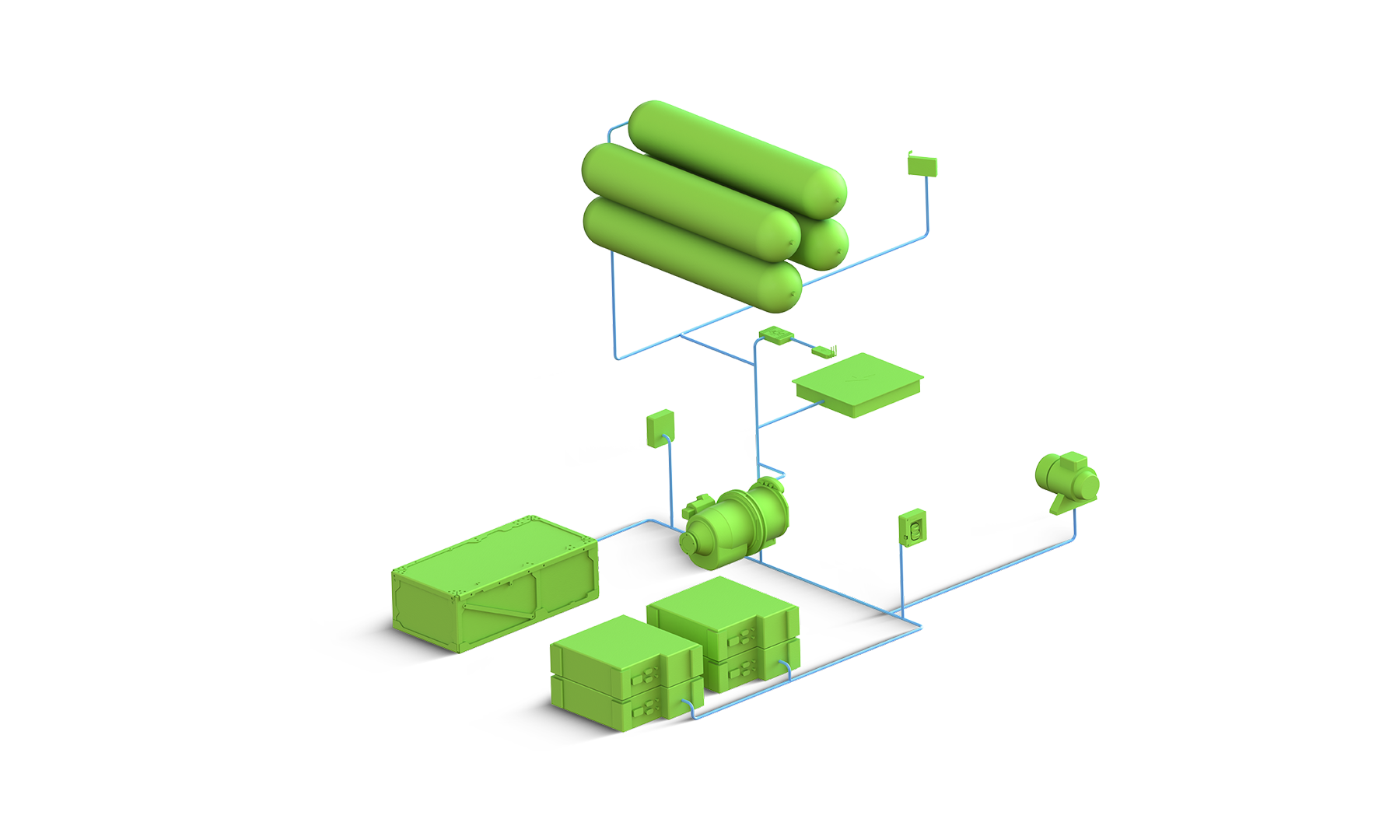
HMI Display
An additional display is installed for the driver, which provides information on the vehicle status, range, battery and charging status, and other important system messages.
VCU
The VCU (Vehicle Control Unit) is the core element of pepper’s modular drive system. It integrates and controls all system components on a logical as well as functional level. The software is developed in-house and complies with the automotive industry’s highest standard for functional safety (ISO 26262). The pepper VCU easily allows the modular drive system to fit in all sorts of vehicles from different manufacturers.
Telematics Unit
Thanks to system-wide integration of the telematics unit used, a wide range of different data can be tracked. The current functions include vehicle tracking, online diagnosis, and the capture of live data about the vehicle state. Furthermore, over-the-air software updates will be available. Thanks to predictive analytical software from pepper’s technology partner TWAICE, the use of a digital battery twin increases the service life, efficiency, and sustainability of the batteries in use. Further useful value-added services for the digitalization of fleet management are already in development.
BJB
The Battery Junction Box (BJB) is pepper’s own development and serves as a “high voltage fuse box”. It is connected to battery (and optional fuel cell) and is being controlled by the VCU. Furthermore, the BJB is constantly monitoring the battery insulation and is crucial in case of an emergency if the system needs to be quickly discharged.
Auxiliary units
Other components of the kit include auxiliary units such as air compressors, servo pumps, air conditioning systems and hybrid auxiliary heaters, which are installed for purely electric or hydrogen-electric operation of the vehicle. An efficient control system, which takes over the interaction of these components, guarantees the most energy-efficient operation possible.
Charge Controller
The charge controller we use, is provided by chargebyte and serves both vehicle and charging infrastructure. It assures highest compatibility and can be directly integrated into the pepper modular drive system. Furthermore, it provides the option of using several charging sockets on vehicle side, which is highly practical for operation in depots. Close collaboration with market leader chargebyte allows fast development cycles and a glance into the future as the controller is fulfilling the ISO 15118 standard for bi-directional charging already today.
- Charging type: Type 2 CCS, DC charging
- Max. charging: up to 350 kW
- System voltage: 650 V
Electric Drive Train
Depending on the vehicle, different types of electric motors can be used, our portfolio of electric drive trains is growing steadily. For example, in the Mercedes-Benz Citaro city bus the AxTrax 140 electric portal axle from ZF is used, and in the Mercedes-Benz Actros MP3 truck the CeTrax central engine from ZF.
Battery
The pepper modular drive system uses a lithium-ion battery based on NMC technology (Nickel-Manganese-Cobalt). It comes in units of 60 kWh each, two of which can be seen on display. Minimum configuration for pure electric drivetrain is 120 kWh, scalable up to 720 kWh, depending on the vehicle and operation purpose. To charge a 240 kWh battery from 8% to 80% takes approx. 70mins, using a 150 kW charger.
H2 Tank System
For vehicles with fuel cell drive systems modular expandable hydrogen tank systems are used – one tanka has a capacity of 5 kg hydrogen. Refueling a tank system of 30 kg capacity takes approx. 10-15 minutes.
Hydrogen Fuel Cell
pepper is developing conversion kits for commercial vehicles to fuel cell drives, with fuel cells provided by Toyota. There are three conversion options:
- Battery-electric drive train with a fuel cell range extender for busses (range up to 400 km, shown here)
- Pure fuel cell drive train (without charge controller and plug and a smaller buffer battery; range up to 500 km for busses and 800 km for trucks)
with an energy consumption between 9 to 12 kg H2 / 100 km.
Why use hydrogen for special vehicles?
If the body of the vehicle is already heavy and uses a substantial amount of power, a hydrogen-electric drive (fuel cell) should be considered. Having the same amount of energy stored, H2 drives are lighter than pure battery-electric drives, because fewer batteries are installed, which account for most of the weight.
Order development
Analysis
Analysis of the vehicles to be converted for technical characteristics, TÜV inspection reports, analysis of subsequent requirements such as route lengths, route profiles, round-trip times, charging points, etc.
Planning
Detailed specification in terms of range, battery capacity, drivetrain, air-conditioning, and optional charging concept
Implementation
Conversion and commissioning of the vehicle in a partner workshop including TÜV vehicle approval
Operation
Support and advice during recommissioning with awareness training for workshop staff and planning of the necessary charging infrastructure
Why pepper?
Compliance with functional safety standards
Experience with conversions & retrofits
Short development cycles for new vehilce types
ePTO solutions in a wide power range
Support with charging concept and infrastructure
Why pepper?
Compliance with functional safety standards
Experience with conversions & retrofits
Short development cycles for new vehilce types
ePTO solutions in a wide power range
Support with charging concept and infrastructure
Foto: Paul Group
“pepper is our partner and technology supplier for zero-emission drivetrain systems, both for retrofitting and in the area of Tier 1 kits for new vehicles. The company is a leader in terms of innovation, quality, and reliability.”
Paul Nutzfahrzeuge GmbH
Bernhard Wasner, CEO
“pepper is our partner and technology supplier for zero-emission drivetrain systems, both for retrofitting and in the area of Tier 1 kits for new vehicles. The company is a leader in terms of innovation, quality, and reliability.”
Paul Nutzfahrzeuge GmbH
Bernhard Wasner, CEO
Contact us
If you would like to know more about our electrification solutions, please get in touch!
